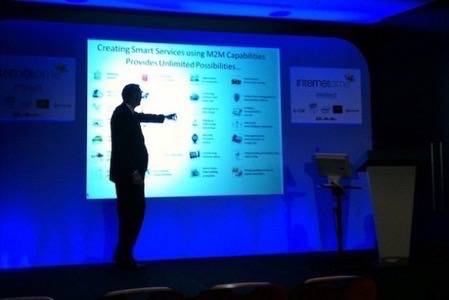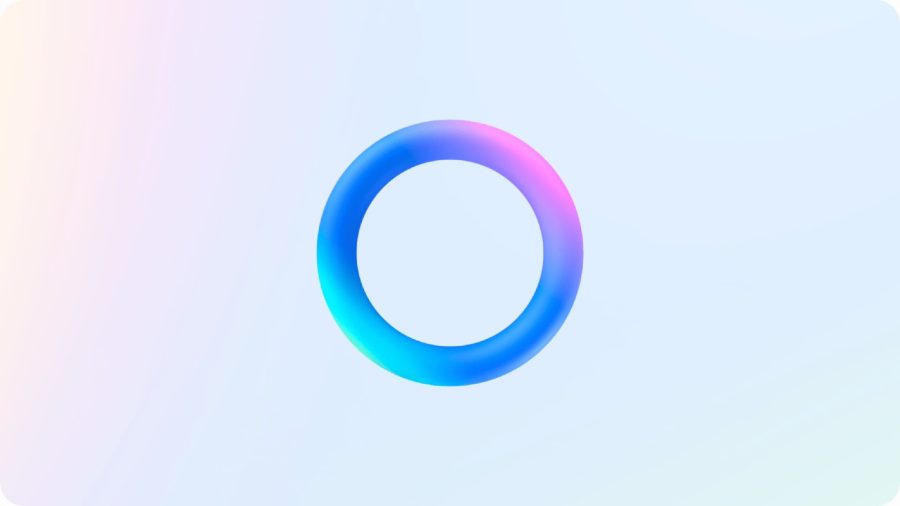Internetome, the U.K.’s first full day conference dedicated to the Internet of Things was held on Nov 10 in London. In front of a full attendance, with representatives from academia, government, and enterprise, a wide range of speakers illustrated the promise and the challenges of the complex systems based on smart sensor networks.

The Economist magazine featured in its current issue a special report on Smart Systems, underlining how rich, and important these ICT solutions have become, and how they will in the future sustain value added services for a wide set of vertical application areas.
Guest author David Orban is the Chairman of Humanity+, an organization dedicated to promoting understanding, interest, and participation in fields of emerging innovation. He is Advisor to the Singularity University, founder of both WideTag, Inc and Startupbusiness, is a Scientific Advisory Board Member for the Lifeboat Foundation, a nonprofit organization dedicated to encouraging scientific advancements while helping humanity survive existential risks.
The Internetome conference – held at the posh if surprisingly glowing red Park Plaza Westminster Hotel, right across the Big Ben, and on the London Eye’s side – was introduced by Philip Sheldrake, its organizer and Master of Ceremonies. Philip mentioned that if China was building an IoT city (!) from the ground up, and putting together a five day conference on it with 5,000 delegates and 12 parallel tracks, then the U.K. was probably also ready for such a conference, and hopefully applications, and deployments that would emerge.
The tweetup the evening before the conference at a Soho pub was attended by a total two people, Philip, and the author, indicating either that the subject is still pretty exotic, or that tweetups haven’t become a popular way of organizing an ad hoc informal meeting. (Truth to be told, a third person called us when we already left the pub, headed for some excellent Indian at the Red Fort. If you are in London check it out!)
“We do not know how these tiny chips will transform our lives, and that is the beauty of it.”
One of the main themes of the conference was the evolution of wireless communication infrastructure, and how the various open standards would compete to sustain the increasing number of connected nodes, whether on personal, local or wide area networks.
The number of nodes, or at least their order of magnitude, was also the subject of some friendly banter, and easy self-irony, as the various speakers competed to quote larger and larger numbers: John Woodget, worldwide director of telecommunications at Intel opened with 15 billion, and other speakers quoted other numbers, but all were apparently swept aside by that by Justin Rattner, CTO of Intel, not present at the conference, who with 7 trillion nodes in the IoT network in ten years, is apparently the current champion of this strange sport.
Woodget presented fairly rich and elaborate slides on the way Intel sees the development of the field, predicting a tenfold increase in machine-to-machine (M2M) communication applications in five years, with 70% of them on wireless personal area network (WPAN) connections.
The business model for WPAN M2M applications still has to be found, but the example of SMS text messaging, worth tens of billions of dollars per year, shows that it is possible.
John Woodget, Global Director for the Telecommunications sector, Intel

He also announced that next year Intel is going to bring to the market an Atom-based reference design platform for M2M applications, which being affordable, will enable a large number of developers to prototype applications in a flexible environment rich with connection options. The reference platform, which apparently won’t have a name — one wonders how annoying it will be to search for it or to place an order for it exclusively by its SKU — will have 3G, 4G, Wi-Fi, zigbee connectivity built in, based on the now ubiquitous SIM card model.
He concluded saying, “We do not know how these tiny chips will transform our lives, and that is the beauty of it.”
Next on stage was myself. I’m the founder of WideTag and advisor of the Singularity University, and I talked about the Future of Social Objects and how the units of the IoT networks will form structured groups, effectively societies, with certain necessary characteristics of autonomous communication, and decision making. I also spoke about the complexity of the deployment, and management of future IoT networks, and the barriers to their full potential which are not only technological, or infrastructural, but also social, and legal. The technology of Google’s autonomous robotic cars is ready: what is not ready is the insurance framework that will enable the smooth management of liabilities for the accidents which will unavoidably occur.
The Future of Social Objects – Internetome Conference
View more
from
.
Robin Hearn, director of strategic marketing at Qualcomm described how cellular communications are at the heart of IoT, showing numbers that — as Sheldrake gleefully remarked — actually agreed with those from Intel. He also showed a fascinating gamut of IoT applications, from smart grids to wireless cows, with this last one being also the subject of an apparently unbeatable ROI calculation: CowDetect, the application for networked cows, adds $350 per year to the yield of each animal. Sheldrake on Twitter was quick to comment that if the same were applied to the citizens of the U.K., the entire national debt could be quickly payed down!
Gert Kortuem, of Lancaster University, underlined the need for IoT to take into account the human factor, and to build a livable environment where people can make sense of the data that is collected. He also highlighted the unexpected nature of human behavior, exemplifying it with the counterintuitive result of an experiment, where those smart meter equipped homes, which were of Republicans who did not express specific interest for the environment, would increase their energy consumption, when told that they were using more electricity than their neighbors. He also spoke about the need of designing easy, understandable, non-geeky user interfaces for IoT applications.
Gus Hosein of Privacy International described a post-privacy world, remarking that there is no such a thing as non-personal information. Supposedly anonymized data sets, when connected with others, will always enable the pinpointing of the individual. Consequently all information has to be treated as sensitive. As an example he presented the consumer backlash against smart meters, when it became apparent how their readings could lead to fine grained analysis of behavior. Hosein concluded with a provocative call to design devices that can cheat. He said that if we don’t allow for anonymity, society will fail.
Philip Sheldrake shared a proposal about four levels of data treatment, from delete, sustain, stats, to archive, which combined with other parameters on sharing he cleverly represented on the Internetome Privacy Dial: a visual representation of contractual agreements between consumers, and service providers for a clear management of data collected.
Alexandra Deschamps-Sonsino of Tinker London presented a wide range of stimulating, funny, provocative creations based on Arduino, the consumer level electronics prototyping platform, where smart objects, and networked sensors enter the everyday life.
Fraser Davidson, IBM VP and U.K. lead of the Smarter Cities initiative concluded the talks presenting a rich series of analyses about the flow of data, energy, and goods in a large, complex system as a city, when better understood by the applications of smart networks. He said “76% of the apples consumed in the U.K. come from overseas, traveling 3700 miles to reach us,” and pinpointed Peterborough as the leading smart city in the U.K., with fascinating visualizations.
Tony Fish followed moderating a panel, where he took the stance of the provocative contrarian, remarking the dangers of the complexity of the systems that compose IoT: “The iPhone is now so complicated that people don’t use it!”
The closing remarks of the conference were delivered by the author, David Orban, as a call for action. The Internet of Things will only happen, if we together, when the conference is over, put in practice what we heard, at our University, department, or enterprise, and through education, experimentation, and the application of open, interconnected systems build it one step at a time.
The next Internetome conference is planned for Spring 2011 on the West Coast in the USA!










